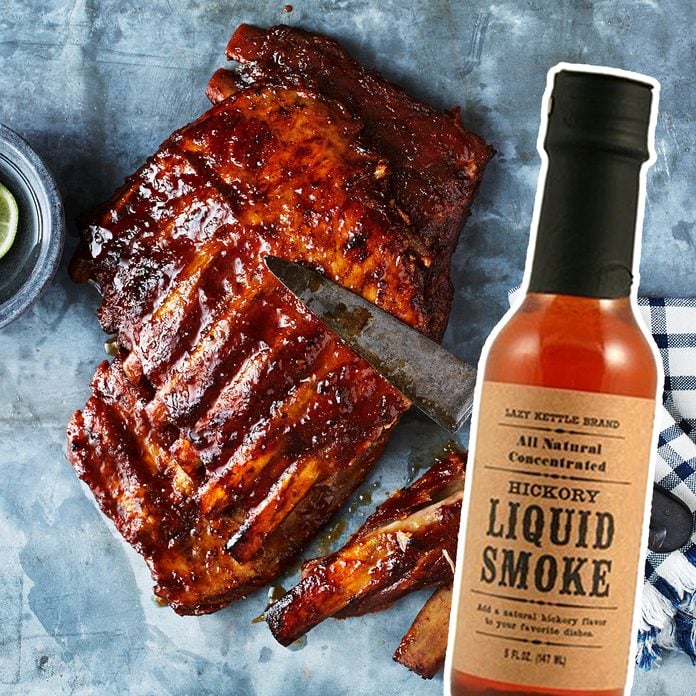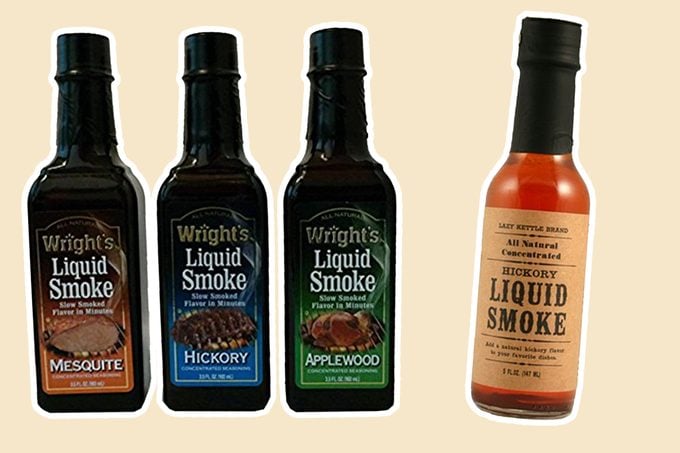What Is Liquid Smoke?
Updated: Jan. 05, 2023

Liquid smoke is an ingredient surrounded by controversy. Many turn their noses up at it, but should they?
For tens of thousands of years, the flavor of smoke has been part of our food. It wasn’t planned, it was simply a by-product of humans cooking over open fires. Although, I’m pretty sure it was a flavor we immediately loved. While it may have been a by-product, the benefits of smoke was quickly realized.
Early man noticed foods exposed to smoke were able to be stored much longer than other meats. They didn’t understand that smoke kills many of the pathogens that cause food to spoil, they only knew it worked. So they continued to do it and thousands of years later, we’re still smoking foods. Today, we have numerous options for food preservation but the art of smoking still captivates us.
What Is Liquid Smoke?
Prior to the late 19th century, the only way to get a smoky flavor in food was to cook it over a fire. That is until Ernest H. Wright made an interesting discovery. One day he was looking into the chimney of a stove and noticed a black liquid running down the sides. That liquid was liquid smoke in its simplest form.
Many people think of smoke as a gas or vapor but what most don’t realize is it also contains a lot of water. The water vapor carries the numerous flavor compounds and if left alone, it simply dissipates into the atmosphere. If you can trap it, you can capture the water and the flavor. What E.H. Wright did was divert the smoke through a condenser, much like distilling alcohol. When the warm smoke hits a cool surface, it condenses into a liquid, liquid smoke to be exact.
What to Look for When Shopping for Liquid Smoke
Today, many brands of liquid smoke are made just that way. They build a fire, capture and condense the smoke, filter out the impurities and bottle it. It’s a relatively simple process.
However, not willing to leave a good process alone, some manufacturers have created artificial liquid smoke using chemicals, dyes and flavorings. Those are the ones I tend to avoid. Look at the ingredient list; it should say smoke or smoke flavor and water. If you see caramel color, sugar, molasses, preservatives or any chemical-sounding ingredient, you know other things have been added.
Are There Different Flavors of Liquid Smoke?
Great barbecue pitmasters swear by certain woods or blends of woods so it should come as no surprise that liquid smoke also comes in different wood flavors. One of my favorite brands, Wright’s Liquid Smoke, offers applewood, mesquite and hickory varieties. Lazy Kettle Brand also offers are really delicious hickory liquid smoke.
How to Use Liquid Smoke
There are numerous ways to use liquid smoke in recipes. It’s as easy as shaking a dash or two into, onto or over anything you want to add a touch of smoke. Marinades and sauces are a natural fit. Try mixing it in salad dressings, chicken salads, brushed onto chicken before being breaded and fried.
How about in cocktails? Scotch, Mezcal and other spirits have a smoky flavor so why not add it to others. Fair warning though, this is powerful stuff. A minuscule amount goes a very long way, so be light-handed when adding it to recipes. We’ll show you how much to use in these liquid smoke recipes. And if you’re interested in using smoked ice, we’ve got you covered there, too.
Is Liquid Smoke Safe?
It’s been widely proven smoke contains carcinogens (cancer-causing chemicals). However, due to the filtering process, liquid smoke is actually safer to consume than food smoked over a live fire. Even with the filtering liquid smoke gets, should we be worried? The answer lies in how much you’re eating. If you’re drinking three bottles of the stuff a day, you are going to have some issues. That teaspoon you add to a huge pot of spicy chili is going to be well under the recommended daily amount.
What scientists do say is most of the carcinogens are solids so after time if you notice some sediment in the bottle, leave it. This will happen naturally over time, so the longer you have it around, the more sediment will sink to the bottom of the bottle. So don’t be tempted to shake the bottle before use if you’re concerned.

